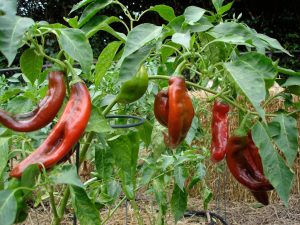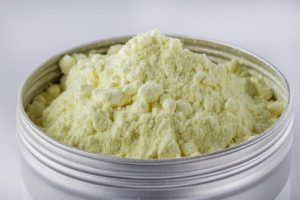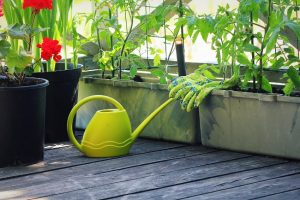
Grow a rainbow in your garden by planting peppers in shades of green, orange, red, yellow, purple or even black. The shapes can be bell, blocks, balls or elongated. The tips of growing peppers from seed, in addition to supposing a nutritious contribution. It brings vitamins, fiber, and antioxidants to the dining table. Red peppers provide more than 100 percent of the daily value of vitamin C and A . Green peppers are full of fiber, folic acid, and vitamin K . They are tropical beauties; the peppers come from the south and thrive in hot afternoons and sensual nights. Peppers grow best when temperatures stay between 20 º to 25 º C during the day and 15 º to 20 º C during the night. The growth stops and the flowers can fall when temperatures fall below 13 º C or rise above 30 º C.
Growing peppers from seed

One of the great advantages of growing peppers is that great harvests are obtained with very little effort. You can growing peppers from seed by following these tips. Whether grown in pots or in planters or directly on land. It is sure that you will harvest peppers in abundance as long as the basic elements are covered: soil, water, fertilizers.
Peppers prefer at least 6 hours of sun a day. Plants in a substrate rich in organic matter and phosphorus and with good drainage. The soil should not be cold when transplanting the seedlings (20º is the ideal temperature). The distance between plants should be 30 cm in rows that in turn are 40 cm from each other or 30 cm in a stepped pattern. This stepped pattern is done by placing three plants, in a 90 cm wide strip. When the plant is already grown, the leaves of the pepper plant should touch as little as possible. The tight space between plants helps to provide shade, which reduces the evaporation of water. The shade that this gives to the fruit also protects it from sunburn. Insert rods at the time of planting. As the peppers mature, tie the stems full of fruit to the canes to prevent them from breaking.
Water and fertilizer
The pepper plant constantly needs moist soil if the fruits can develop a bitter taste. The mulch helps retain soil moisture, but if it gets too early in the season, it can also reduce soil temperature. Black plastic or gravel is heated early in the season. Use it even before planting to prepare fresh spring soil for early planting. To avoid cooling the soil, do not apply coverages such as hay, shredded leaves, white plastic or blades of grass until the first peppers come out. Mix earthworm humus or compost in the planting holes, along with a specific tomato fertilizer. When the fruits begin to form, feed the plants again with specialized fertilizer, fish emulsion or manure tea.
Tips:
If the plants are blooming, but we are not seeing fruits, you have to give them some gentle shakes every day. The flowers of the pepper are self-pollinated, which means that they bloom and that they are pollinated by both the bees and the wind. If the stems of the peppers turn black, that is a sign of maturity, not of disease. You can start to collect your peppers when they are still green or wait until they turn red, yellow or orange. Sweet peppers are sweeter and hot peppers are hotter when the fruits are red. If you collect the peppers that are still green, the plant will continue to bear fruit. To harvest, use a knife or scissors to cut through the stems to make a clean cut and prevent damage to the growth stems. Leaving a piece of stem in the pepper improves storage.





